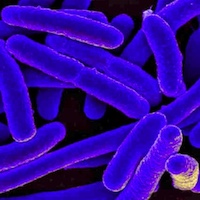Enumeration of Escherichia coli and determination of Salmonella spp. and verotoxigenic Escherichia coli in shellfish (Mytilus galloprovincialis and Ruditapes decussatus) harvested in Sardinia, Italy

Accepted: 4 February 2020
HTML: 15
All claims expressed in this article are solely those of the authors and do not necessarily represent those of their affiliated organizations, or those of the publisher, the editors and the reviewers. Any product that may be evaluated in this article or claim that may be made by its manufacturer is not guaranteed or endorsed by the publisher.
Authors
The aim of the present study was to evaluate the occurrence of Salmonella spp., Verotoxigenic E. Coli (VTEC) and enumerate E. coli in shellfish (Mytilus galloprovincialis and Ruditapes decussatus) collected before and after depuration from two class B harvesting areas located in Sardinia (Italy). All the samples were analyzed for Salmonella spp. detection according to European Commission Regulation (EC) 2073/2005 and examined using the five tube Most-Probable-Number (MPN) method for enumeration of E. coli in accordance with the European Union reference method ISO 16649-3:2015. E. coli VTEC was investigated following a direct multiplex Polymerase Chain Reaction (PCR) screening test. The enumeration of E. coli met the European law limit for Class A areas of 230 MPN/100g. The averaged enumeration of E. coli in samples of M. galloprovincialis and R. decussatus collected at the harvesting time was 39 and 37 MPN/100 g respectively. The average contamination levels in samples collected after purification were 58 MPN/100g (M. galloprovincialis) and 32 MPN/100 g (R. decussatus). E. coli VTEC was not detected, on the contrary, Salmonella ser. Typhimurium was detected in one sample of M. galloprovincialis and in one sample of R. decussatus collected at the harvesting time. No significant associations were observed between E. coli levels in shellfish and environmental parameters of water or with the detection of Salmonella ser. Typhimurium in M. galloprovincialis and R. decussatus samples. Nevertheless, the occurrence of Salmonella ser. Typhimurium, involved in human infection outbreaks, should be considered a potential risk for consumers.
How to Cite
PAGEPress has chosen to apply the Creative Commons Attribution NonCommercial 4.0 International License (CC BY-NC 4.0) to all manuscripts to be published.

 https://doi.org/10.4081/ijfs.2020.8625
https://doi.org/10.4081/ijfs.2020.8625



